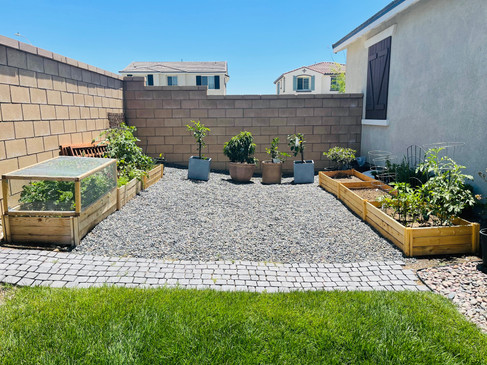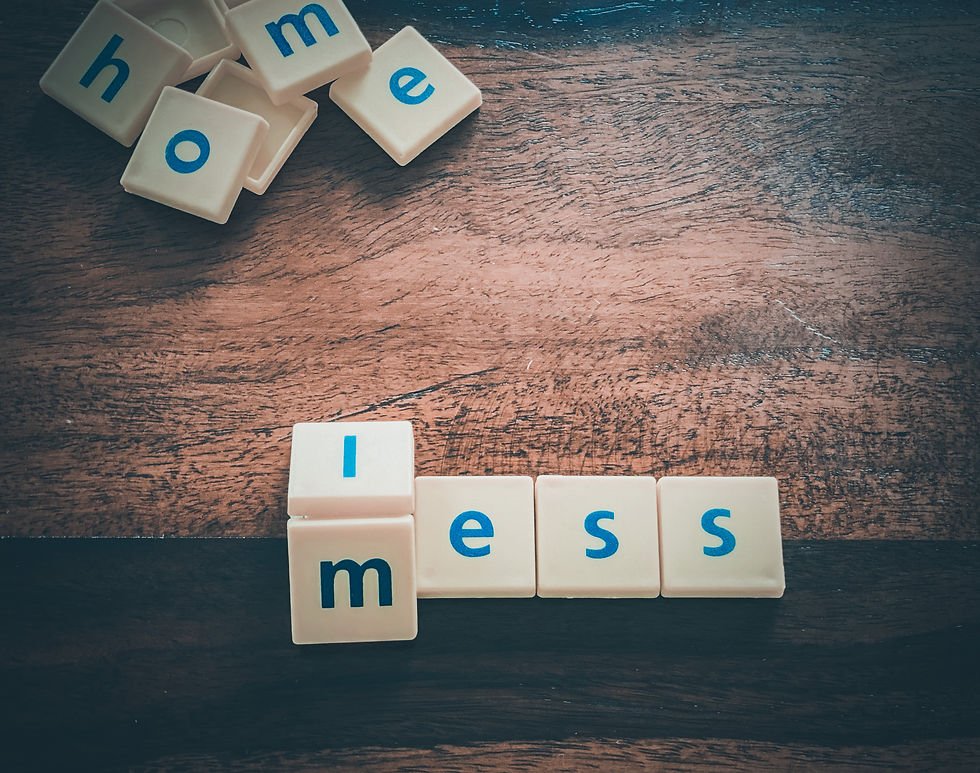Grow Greens
- Litty John

- Jul 10, 2021
- 5 min read
Let me say right at the outset that I am an amateur when it comes to gardening. I took to gardening about a year ago when we bought our new home, and some of you who have been on this journey with us know that I did a succulent garden on one side of my house. Since then, I have been working slowly on different parts of our backyard.

I had allotted a small space in one corner of the house to try my hand at growing fruits & vegetables and over this past year I have been slowly working on that space. In this post I want to talk about the basics of starting your own vegetable and fruit garden. And while today I have a backyard with a space allotted to it, I have for many years lived in a basement apartment and then in a slightly bigger home with just a small patio space in front of our door before moving to a home with an actual front yard and backyard, so I want to share ideas that will work for big and small spaces. Here are 5 things we can focus on when planning or re-planning our garden space... Scale, Soil, Size, Season and Strategy.
1. Scale
Whether you have a big or small space always start on a small or maybe even a medium scale if you are a beginner or new to an area or home. I allotted an 18'X 15' space for gardening. It took me a while to figure out the amount of sun and shade that a space gets and thereby find the best place and way to plant things based on that. So I started small and as I got a handle on things I decided to go ahead and continue with what worked and didn't work for me after a few months of trial and error.
The above images show how the garden was when I started working on the allotted area in September 2020 and where I currently am with it. As you can see I added more raised beds and some pots, but I am still working on what more I would like to add in this space. For those who have lesser space to work with, here are some images I found that are great for balcony or small patio spaces that works out amazingly well for pots or small raised beds.
2. Soil
One of the most important things I realized is the soil you have or end up using. Unfortunately the area we moved to had an immensely sandy soil with lots of rocks, which is not great for seeds and even young plants as such.

So I decided to grow the plants either in pots or in raised beds, which I think, definitely gave a better start to my venture. I watched a whole lot of videos and read up on a lot of information to find out the best composition of soil that would work for raised beds and pots and concluded that making my own soil opposed to buying packaged potting soil worked out to be more cost effective. I made a chart and compared prices and understood the content in different soils available at the stores. The current composition of soil I use has definitely given us a harvest of good crops, so I am happy with the mix. These days you get all different specific mixes of soils in plant nurseries and stores and you can pick one depending on whether you are doing a pot, raised bed or in-ground garden.
3. Size
I always liked the raised bed gardening look and even though I had the option of putting things in ground, I went for a mix of raised beds and pots based on the the various factors we cover in this post. So depending on your space these are some of the options you could try:-
Small Spaces: 3-5 pots or 1 raised bed
Mid-size Spaces: 5-10 pots or 2 raised beds
Large Spaces: 3-4 raised beds or in ground
In my space, I had started with 2 raised and 4 pots and then 6-7 months later, we added 4 more raised beds and some more pots.

4. Season
What is the season you are in? I started my gardening project in the fall so it was the season for the cooler crops like spinach, lettuce, beets, carrots etc. I bought seeds of those plants that I knew will do well in the season I was in. You can also buy plants from the store such as green peppers and tomatoes if you find it difficult to grow it from seeds. Now that we are in the summer season here I have planted beans, okra, tomatoes, chili and green pepper and may add some cucumber seeds too. Here is a list of plants that can help you start off, depending on what season you are in:
Spring - Spring crops are when the cold has passed, usually March or April. Crops like beets, potato, onions can be planted early spring and you can also plant some of the summer crops below if you live in a warmer zone
Summer - Summer crops include snap beans, corn, cucumbers, melons, peppers, tomatoes, and squash
Fall - Collard Greens, Arugula, Peas, Beets, Cauliflower, Carrots, Broccoli, Spinach, Cabbage, Mustard Greens, Brussels sprouts, Parsley, Kale (mine are actually doing better into the summer)
Some countries are divided into zones and there is information available on what kind of plants and trees do best in that Zone. This link is an example that show the planting zones in USA.
5. Strategy
I know that gardening is a lot of trial and error but if you can put in the homework of finding out all of the above for your area it will make it a lot more easier to do things and enjoy the process of gaining knowledge and applying as I did. A year later, there is so much I have learnt and found better ways to do things. If you have any questions with regard to the soil or how I did a lot of the groundwork please reach out to us and I will be happy to share all that I have learnt and observed.

While I admit it is a bit of work, I cannot express the joy I experience when these grow and do well. So even if you are a beginner, I want to encourage you to start in a small way, maybe with 2 herbs and then move on to bigger things. There is a verse that I definitely understand much better now "I planted the seed, Apollos watered it, but God has been making it grow. So neither the one who plants nor the one who waters is anything, but only God, who makes things grow. - 1 Corinthians 3:6-7 . So take these steps and sow, wait & watch, because watching growth in any form is rewarding!
Gardening is for everyone...






























Comments